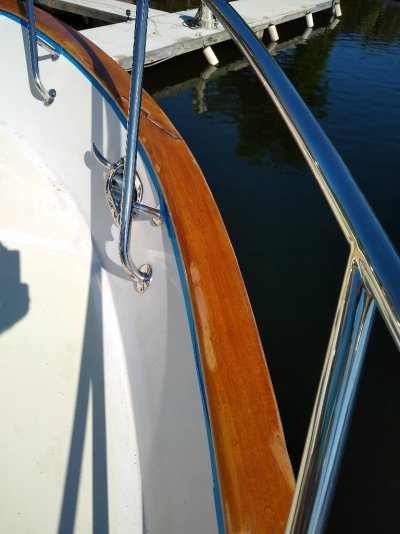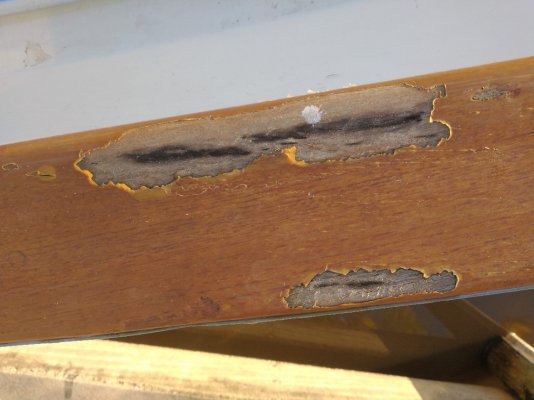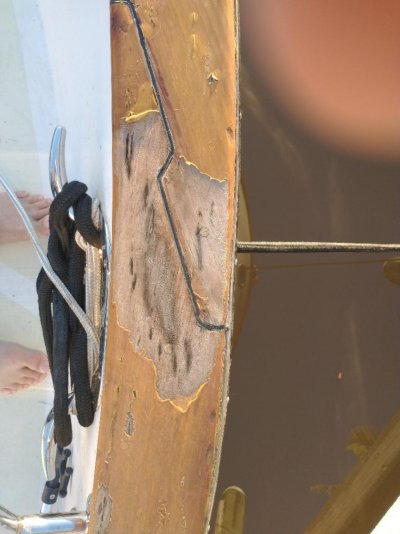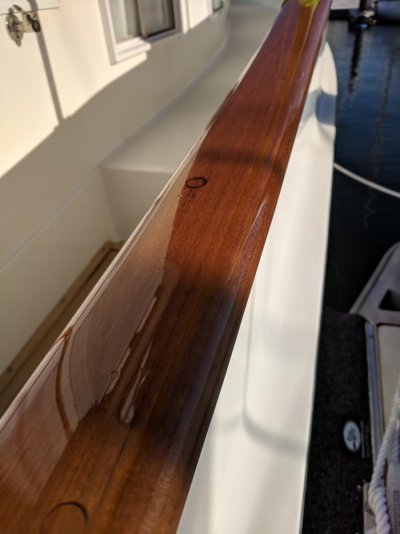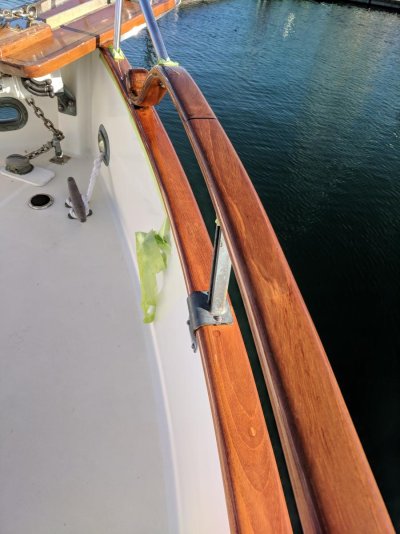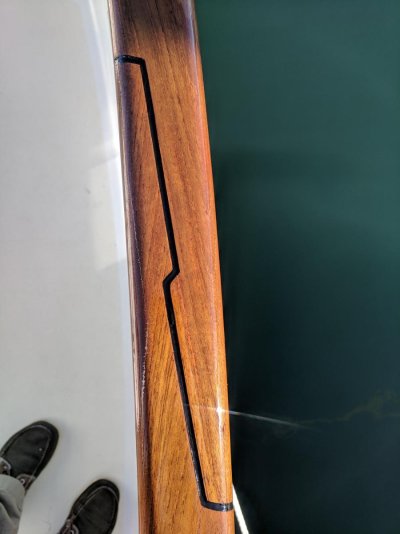menzies
Guru
Back in May I went around all the cap rail on Sonas, scraped out and sanded all the spots, filled with four coats of poly, then went over everything with three coats. It all looked great.
About four weeks ago the varnish on my bow cap rail literally exploded! The varnish on the other cap rails is fine - the top coat is flaking a bit but nothing more than the usual Florida wear and tear, a light sanding in the spring and a couple of new coats will be fine.
The bow rail however looks like someone walked around and poured acid on it. I am now going to have to take a sander to it and bring it to all back to bare teak and start again.
Any ideas why this happened to the bow rail and not the rest? I was wondering if doing this in May when there may have been humidity in the air trapped moisture under the poly - but wouldn't that have happened to the rest as well?
I did have mechanics on the bow dismantling and rebuilding my windlasss but I can't see how they could have caused this.
First photo is what I was doing in May, others are examples of the rail now.
About four weeks ago the varnish on my bow cap rail literally exploded! The varnish on the other cap rails is fine - the top coat is flaking a bit but nothing more than the usual Florida wear and tear, a light sanding in the spring and a couple of new coats will be fine.
The bow rail however looks like someone walked around and poured acid on it. I am now going to have to take a sander to it and bring it to all back to bare teak and start again.
Any ideas why this happened to the bow rail and not the rest? I was wondering if doing this in May when there may have been humidity in the air trapped moisture under the poly - but wouldn't that have happened to the rest as well?
I did have mechanics on the bow dismantling and rebuilding my windlasss but I can't see how they could have caused this.
First photo is what I was doing in May, others are examples of the rail now.
Attachments
Last edited:

